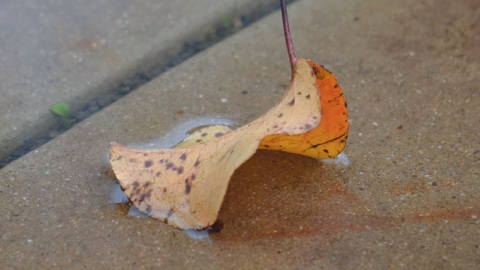7 Ways to "Keep" More Water
Think porous. Use materials that allow water to filter through instead of run off your sidewalks, driveways, patios, streets and turf replacement. Consider porous alternatives like decomposed granite, mulch, porous asphalts and pavers. The city of Thousand Oaks offers free mulch to residents.
Add a tree pit. Tree pits are carved openings in the curb also called parkway curb cuts. Rainwater enters thru the opening, collecting water around the trees and plants. Tree pits can also be a circular ditch carved around the trunk of the tree. Surfrider Foundation Ventura County Chapter (Ventura.Surfrider.org) has a list of knowledgeable local professionals.
Grow plants in the ground instead of raised beds. Like potted plants, plants grown in raised beds are thirstier. Soil drains faster, and evaporation occurs on the surface and four sides. Raised beds are necessary if the soil is contaminated, but when possible plant into the ground.
Increase your SOM with mulch or compost. Compost is beneficial to water systems on many fronts, because it’s rich with micro- organisms and is a sponge for water. It absorbs one-half gallon per square foot of soil at a minimum. Compost lessens water pollution by diminishing the need for chemical fertilizers and pesticides, instead bolstering the plant’s inbred resistance to disease and pests. The city of Westlake Village offers a free compost “tumbler” to residents ($25 for home delivery).
Plant cover crops. Cover cropping is a technique organic farmers use to build nitrogen and the microbiology in the soil. Use this technique in your home garden by scattering wheat or ryegrass seeds in your vegetable garden after the growing season. If you need nitrogen fixers, plant beans and clover. When you’re ready to plant a new crop, turn the cover crop into the soil.
Capture water with rain barrels. A roof collects one-half gallon of water per square foot with every inch of rain. The Metropolitan Water District offers a rebate for rain barrels. Visit your local city or water agency website for the link.
Think bioswale or rain garden. It’s time to move away from slopes and hills in both public and private landscapes unless they feed into a bioswale or rain garden. These are pockets or ditches dug in the ground, designed to capture rain and draw it downward to replenish groundwater supplies. You can find guides online to help you design and install your own. Or attend a water wise presentation with a local master gardener. Find a listing of upcoming workshops at the University of California Master Gardeners of Ventura County website (UCANR.edu/sites/VCMG). Free workshops also are offered through the Watershed Wise Landscape Program. For info, visit WatershedWiseTraining.com/Class-Calendar.







